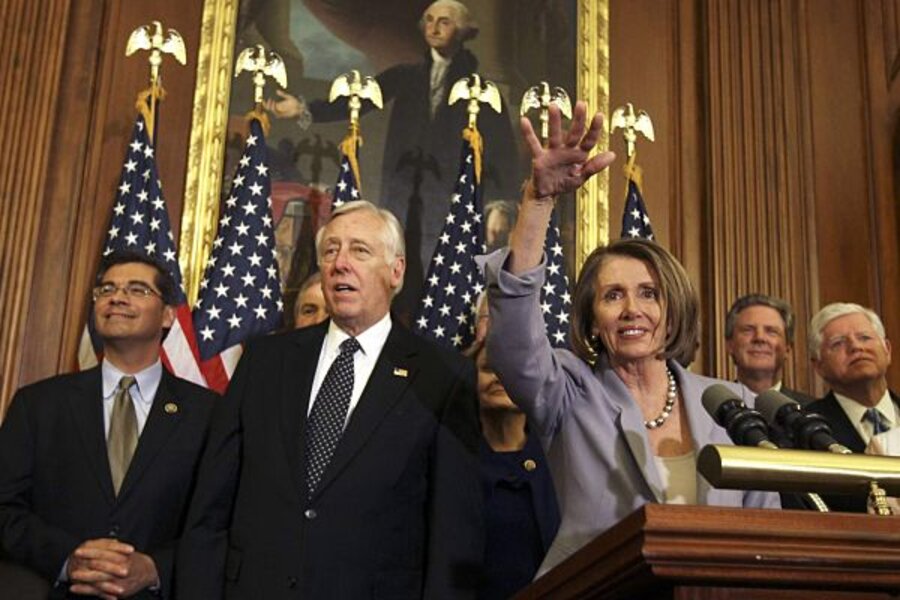New healthcare bill pros and cons: It expands benefits now, cuts them later
Loading...
On Saturday, the Congressional Budget Office released its complete cost estimate for the health/revenue/education legislative package that the House is expected to vote on later today.
The good news: The combined package would reduce the deficit by slightly more over the next ten years ($143 billion) than previously estimated ($138 billion). And nothing has changed about the projected increase in insurance coverage. CBO still expects that the legislation would increase the number of people with health coverage by 32 million in 2019.
The interesting news: A few months ago, CBO invented a particularly useful measure of the federal government’s commitment to health care. This measure combines federal spending on health care and federal tax subsidies for health care. If you view many tax subsidies as close equivalents to spending (as I do), this is a very important metric. It would indicate, for example, that if you increase health spending, but decrease tax subsidies by the same amount, that the federal commitment to health care is not increasing, even though both spending and taxes would be rising. I think that’s a useful way to look at things.
So how does the legislative package line up on this measure?
CBO estimated that H.R. 3590, as passed by the Senate, would increase the federal budgetary commitment to health care over the 2010–2019 period; the net increase in that commitment would be about $210 billion over that 10-year period. The combined effect of enacting H.R. 3590 and the reconciliation proposal would be to increase that commitment by about $390 billion over 10 years. Thus, the incremental effect of the reconciliation proposal (if H.R. 3590 had been enacted) would be to increase the federal budgetary commitment to health care by about $180 billion over the 2010–2019 period.
In subsequent years, the effects of the provisions of the two bills combined that would tend to decrease the federal budgetary commitment to health care would grow faster than the effects of the provisions that would increase it. As a result, CBO expects that enacting both proposals would generate a reduction in the federal budgetary commitment to health care during the decade following the 10-year budget window—which is the same conclusion that CBO reached about H.R. 3590, as passed by the Senate.
In short, the reconciliation package increases the federal commitment to health care over the next decade (e.g., by rolling back the excise tax on expensive insurance plans that’s in the Senate bill) but then brings it down in the future (e.g., by ramping up the excise tax beyond the ten year window).
From a budget point of view, the basic structure of the legislative package is thus: Expand the commitment to health care in the next decade, pay for that expansion using other revenue sources, and then reduce the overall health commitment in later years. It’s that structure that leads to disagreement among budget experts about the long-run effects of the legislation. If the legislation executes as written, it will reduce future deficits substantially. If future Congresses flinch on the future budget savings (without flinching on the continued new spending), it will increase future deficits.
The shout-out: Long-term readers of CBO cost estimates know that they traditionally end with a sentence identifying the one or two people most responsible for the analysis. Given the importance of this cost estimate, however, the letter takes a different approach, identifying several dozen dedicated analysts who have been doing their best to provide Congress (and the American people) with as much information as possible about the legislation. They all deserve our thanks:
David Auerbach, Colin Baker, Reagan Baughman, James Baumgardner, Tom Bradley, Stephanie Cameron, Julia Christensen, Mindy Cohen, Anna Cook, Noelia Duchovny, Sean Dunbar, Philip Ellis, Peter Fontaine, April Grady, Stuart Hagen, Holly Harvey, Tamara Hayford, Jean Hearne, Janet Holtzblatt, Lori Housman, Justin Humphrey, Paul Jacobs, Deborah Kalcevic, Daniel Kao, Jamease Kowalczyk, Julie Lee, Kate Massey, Alexandra Minicozzi, Keisuke Nakagawa, Kirstin Nelson, Lyle Nelson, Andrea Noda, Sam Papenfuss, Lisa Ramirez-Branum, Lara Robillard, Robert Stewart, Robert Sunshine, Bruce Vavrichek, Ellen Werble, Chapin White, and Rebecca Yip.
Add/view comments on this post.
--------------------------
The Christian Science Monitor has assembled a diverse group of the best economy-related bloggers out there. Our guest bloggers are not employed or directed by the Monitor and the views expressed are the bloggers' own, as is responsibility for the content of their blogs. To contact us about a blogger, click here. To add or view a comment on a guest blog, please go to the blogger's own site by clicking on the link above.





